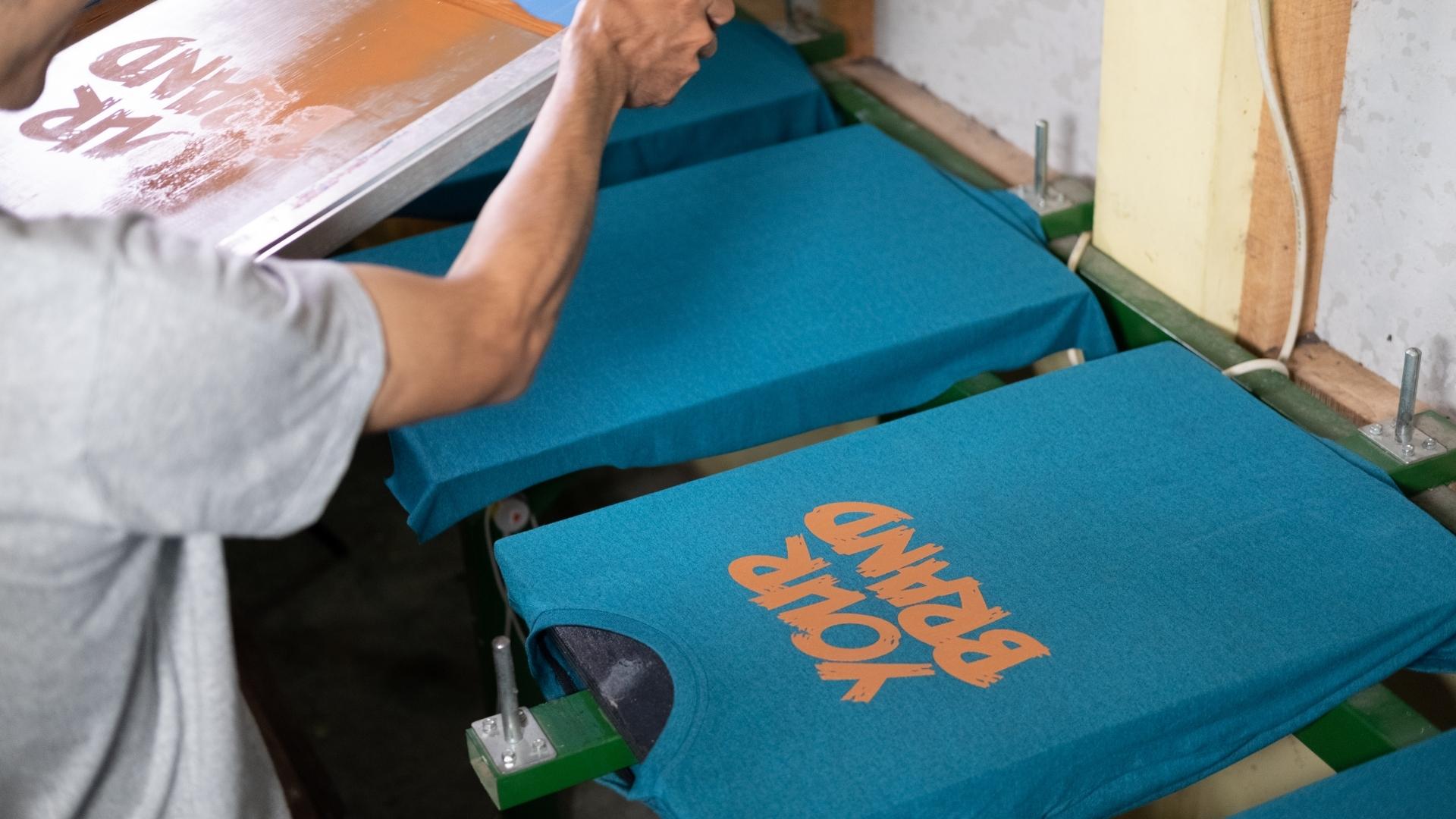The Important Overview to Understanding Screen Printing and Its Versatile Makes use of
Screen printing has a rich background that goes back to ancient times, progressing right into an innovative method utilized throughout numerous industries today. This guide checks out the ins and outs of the screen printing procedure, describing its applications in style, home, and advertising décor - 10:9 Design contact. Comprehending these principles can open creative possibility for both commercial and imaginative jobs. The complying with areas will certainly disclose necessary suggestions and methods to improve one's screen printing undertakings
The History of Screen Printing
Although screen printing has roots that trace back centuries, its evolution shows the technical and imaginative advancements of numerous cultures. Coming from old China, the technique was originally used for embellishing fabrics and later spread to Japan, where it came to be indispensable to Ukiyo-e woodblock printing. The technique shifted to Europe in the 18th century, where it obtained popularity among artisans and industrial printers. The innovation of image solution in the 20th century changed screen printing, allowing for even more elaborate layouts and better efficiency. Artists like Andy Warhol additionally thrust its appeal, using the tool to produce famous works that blended commercialism and great art. By the late 20th century, screen printing had established itself as a versatile technique, utilized in vogue, marketing, and art. Today, it remains to advance, incorporating electronic technology and expanding its applications throughout numerous markets.
The Screen Printing Process Explained
Screen printing changes artistic visions right into tangible designs with a collection of exact steps. An image is created and then transferred onto a screen, normally made of fine mesh fabric extended over a frame. A light-sensitive solution is put on the screen, which is exposed to light, solidifying in locations not covered by the picture. After rinsing the unhardened solution, a stencil is developed.
Next off, the screen is positioned over the substrate, whether it be fabric, paper, or an additional product. Ink is then pushed with the open areas of the stencil making use of a squeegee, transferring the design onto the substratum below. This procedure can be repeated for numerous colors, requiring different screens for each and every tone. The published product is treated utilizing warmth to ensure the ink adheres properly, resulting in a durable, lively layout all set for use.
Sorts Of Screen Printing Techniques
.png)
In addition, specialized techniques, such as discharge screen printing, eliminate dye from the fabric to produce softer prints, while aluminum foil screen printing applies metallic aluminum foil to accomplish a glossy surface (10:9 Design Screen Printing Texas). Each method uses unique attributes, satisfying various innovative requirements and production scales, ultimately broadening the opportunities within the screen printing domain
Applications of Screen Printing in Numerous Industries

Furthermore, the signage and marketing markets make use of screen printing for producing attractive display screens and banners. This method enables bold shades and detailed designs that record focus. In electronics, screen printing is employed for using conductive inks to circuit boards, necessary for part connections. Additionally, the home design industry accepts screen printing to create distinct styles on fabrics and wall surface art. On the whole, screen printing works as a vital tool across varied fields, boosting items with personalized and visually appealing graphics.
Tips for Effective Screen Printing Projects
While embarking on a screen printing job, careful focus to information can substantially improve the last outcome. Initially, selecting high-grade products is crucial; this includes the screen, inks, and substratums. Utilizing proper mesh matters can affect ink deposition and information resolution. Preparation is just as essential; extensive cleaning of displays and appropriate direct exposure times ensure crisp prints.
Next, accurate enrollment is important for multi-color prints. Making use of placement tools can aid accomplish precise layering. Additionally, testing prints on scrap products prior to manufacturing aids identify prospective issues without losing sources.

Often Asked Concerns
What Materials Are Ideal for Screen Printing on Material?
Cotton and polyester blends are optimal for screen printing on fabric because of their toughness and ink absorption. Additionally, specialized materials like silk or canvas can produce distinct textures and surfaces, boosting the total layout top quality.
Just how Do I Tidy and Maintain Screen Printing Tools?
To keep and clean screen printing tools, one need to consistently clean screens with proper solvents, examine squeegees for wear, lube relocating parts, and store all products in a completely dry, dust-free setting to lengthen their lifespan.
What Are the Environmental Effects of Screen Printing?
Screen printing can have substantial environmental effects, consisting of chemical waste from solvents and inks, water use during cleaning processes, and energy consumption. Sustainable practices and environment-friendly materials are crucial for minimizing these negative effects.
Can Screen Printing Be Done at Home Successfully?
Screen printing can be effectively done at home with the right materials and techniques. Enthusiasts can develop top quality prints, though success relies on their ability level, devices, and understanding of the procedure entailed.
What Are the Expenses Connected With Starting a Screen Printing Business?

Starting a screen printing organization includes costs for devices, materials, and workspace. First expenses typically vary from a few hundred to numerous thousand dollars, depending on the range, top quality of equipment, and wanted production ability.
Screen printing has an abundant history that dates back to old times, developing into an innovative technique used across different sectors today. Another strategy, rotating screen printing, uses cylindrical screens, helping with constant printing on textile rolls, therefore boosting efficiency for massive productions. Furthermore, specialty techniques, such as discharge screen printing, get rid of color from the textile to create softer prints, while foil screen printing applies metallic aluminum foil to attain a glossy surface. In the fashion market, screen printing is extensively made use of to produce vivid layouts on garments, making it possible for brand names to showcase their distinct designs. Cotton and polyester blends are optimal for screen printing on material due to their toughness and ink absorption.